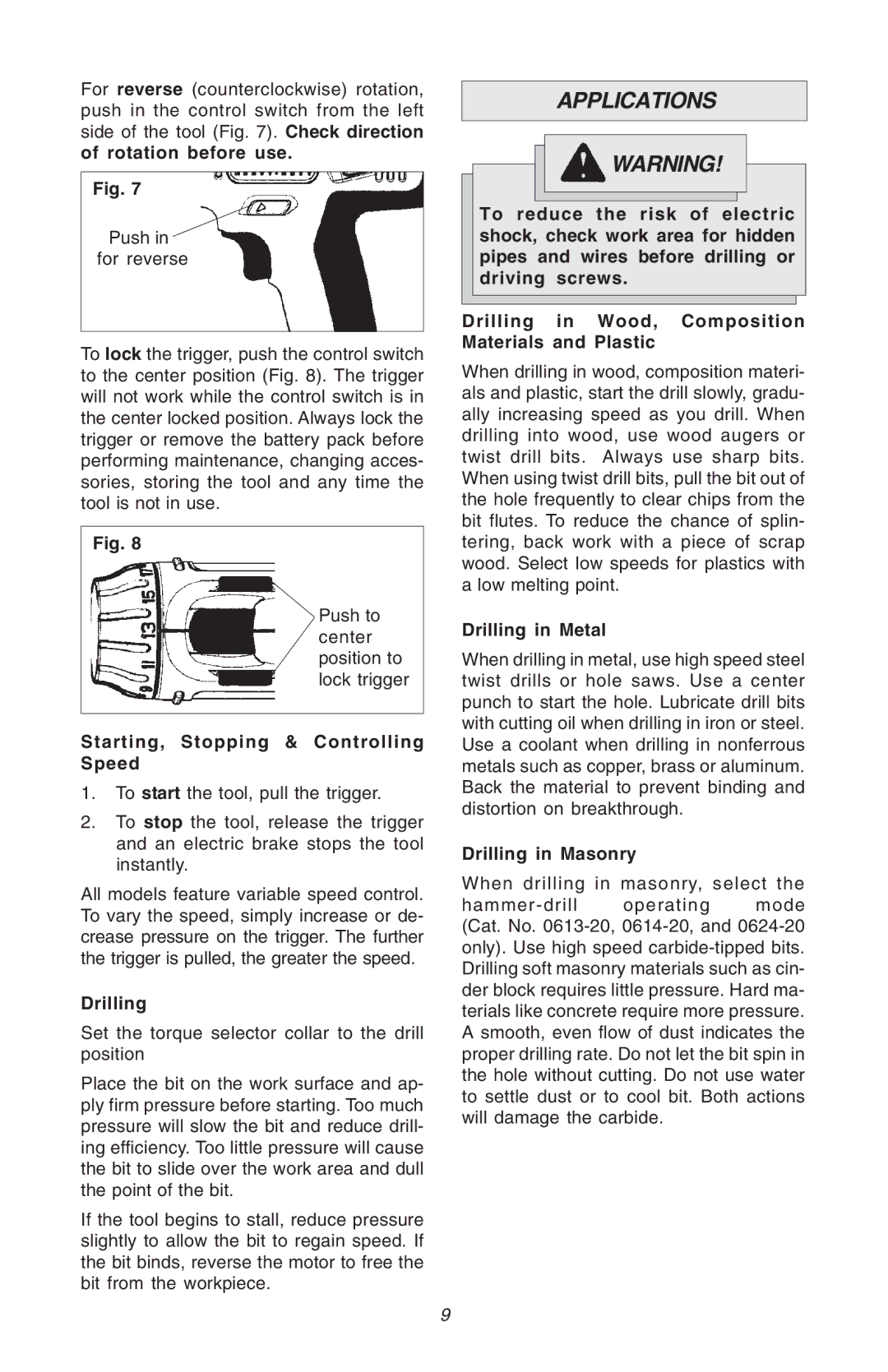
For reverse (counterclockwise) rotation, push in the control switch from the left side of the tool (Fig. 7). Check direction of rotation before use.
Fig. 7
Push in for reverse
To lock the trigger, push the control switch to the center position (Fig. 8). The trigger will not work while the control switch is in the center locked position. Always lock the trigger or remove the battery pack before performing maintenance, changing acces- sories, storing the tool and any time the tool is not in use.
Fig. 8
Push to center position to lock trigger
Starting, Stopping & Controlling Speed
1.To start the tool, pull the trigger.
2.To stop the tool, release the trigger and an electric brake stops the tool instantly.
All models feature variable speed control. To vary the speed, simply increase or de- crease pressure on the trigger. The further the trigger is pulled, the greater the speed.
Drilling
Set the torque selector collar to the drill position
Place the bit on the work surface and ap- ply firm pressure before starting. Too much pressure will slow the bit and reduce drill- ing efficiency. Too little pressure will cause the bit to slide over the work area and dull the point of the bit.
If the tool begins to stall, reduce pressure slightly to allow the bit to regain speed. If the bit binds, reverse the motor to free the bit from the workpiece.
APPLICATIONS
![]() WARNING!
WARNING!
To reduce the risk of electric shock, check work area for hidden pipes and wires before drilling or driving screws.
Drilling in Wood, Composition Materials and Plastic
When drilling in wood, composition materi- als and plastic, start the drill slowly, gradu- ally increasing speed as you drill. When drilling into wood, use wood augers or twist drill bits. Always use sharp bits. When using twist drill bits, pull the bit out of the hole frequently to clear chips from the bit flutes. To reduce the chance of splin- tering, back work with a piece of scrap wood. Select low speeds for plastics with a low melting point.
Drilling in Metal
When drilling in metal, use high speed steel twist drills or hole saws. Use a center punch to start the hole. Lubricate drill bits with cutting oil when drilling in iron or steel. Use a coolant when drilling in nonferrous metals such as copper, brass or aluminum. Back the material to prevent binding and distortion on breakthrough.
Drilling in Masonry
When drilling in masonry, select the
9
